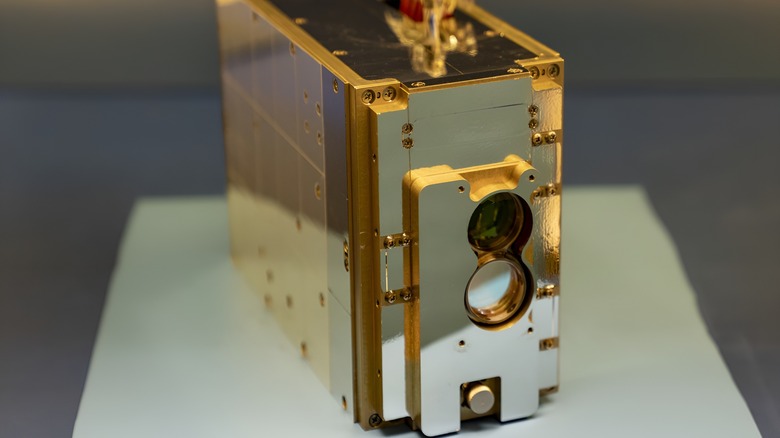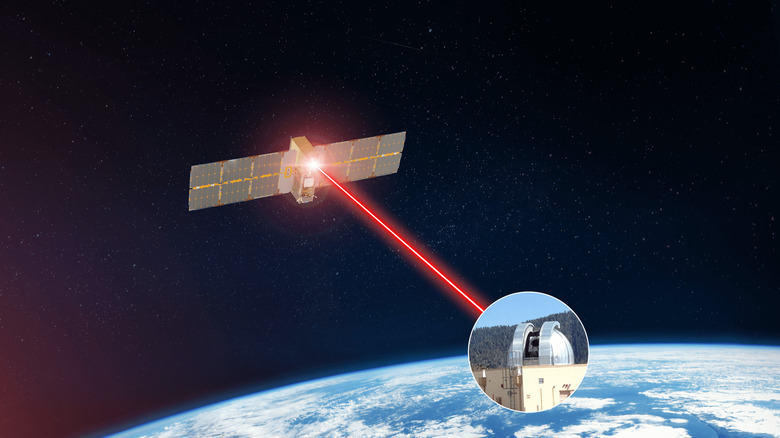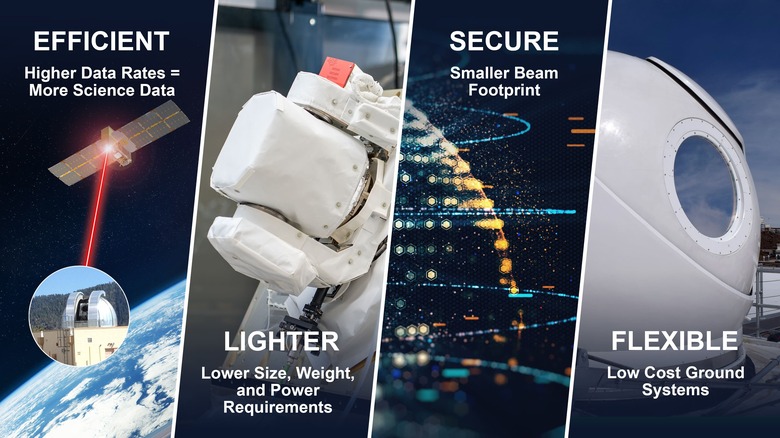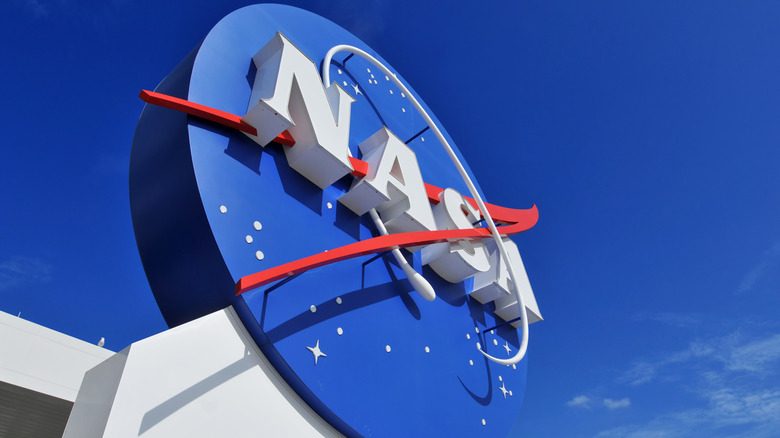NASA's New Data Communication System Is Faster Than Your Internet, And It Works In Space
Currently, fiber optics are the fastest and most reliable medium for internet connectivity, providing consumers with data transfer speeds of up to 2 Gbps (gigabits per second). However, these transfer speeds can be insufficient for scientific applications, especially when science is happening in space 300 miles from the ground, and you have a limited number of short windows within which you can transfer data to receivers on the ground.
This is where NASA sets itself apart from the consumer market. Since there's no conceivable way to establish a fiber-optic connection between space and the ground, and radio transmissions can't provide the bandwidth they need to transmit all of the data their satellites and probes collect, they have turned to optical communications — in other words, lasers. Enter the TeraByte InfraRed Delivery (TBIRD) system, with which NASA has achieved data transfer speeds of 200 Gbps from space.
In addition to the speed at which they transmit data, laser communications allow for greater amounts of data to be shared with smaller, less power-hungry components than traditional radio wave setups. Furthermore, lasers are far more secure since they don't broadcast over large areas and can be fired directly at the receiver on the ground. Considering these benefits, there will likely be commercial applications for the technology developed in the TBIRD program. However, for now, you will have to work at NASA if you want access to this amazing new tech.
How TBIRD works
While the TeraByte InfraRed Delivery system uses a laser, you aren't going to see red beams of light firing down from the heavens like something out of Star Wars. As the name suggests, the device relies on invisible infrared beams which won't harm your eyes, encoding data into the oscillations of light waves in the laser it uses. When it is time to transmit, TBIRD beams its data down across multiple infrared wavelengths to maximize the amount of data that can be sent. While it is still an electromagnetic wave, infrared light has much higher frequencies than radio waves, allowing more data to be transmitted. TBIRD can achieve a data transfer rate 2,000 times higher than what can be achieved with radio waves.
TBIRD is the size of a regular tissue box and is housed inside NASA's Pathfinder Technology Demonstrator 3 CubeSat, launched into space on May 25, 2022, and is the size of two stacked cereal boxes. The PTD-3 uses reaction wheels to ensure the TBIRD is correctly oriented to transmit data down to the ground station at NASA's Jet Propulsion Laboratory in Southern California.
Due to the hyper-directionality of laser communications and the impacts atmospheric effects and weather conditions can have on the transmission, the ground station also employs an internally developed protocol to tell TBIRD which data it received correctly so that the satellite can resend only the frames which weren't received, saving time and energy.
The goals of the TBIRD program
TBIRD was conceptualized by MIT's Lincoln Laboratory scientists in 2014 to achieve the low-cost and high-speed transmission of large amounts of data from spacecraft.
Despite being a federally funded research and development facility sponsored by the Department of Defense, the Lincoln Laboratory also works with non-defense-related federal institutions, such as NASA, for purely scientific purposes. In this case, the problem being addressed was that while modern spacecraft rely on radio waves to communicate and transmit data, the sheer volumes of data being generated are too large to be transmitted back to Earth. To put the issue into perspective, the James Webb Space Telescope can produce up to 57GB of data daily but can only transmit up to 28Mbps. This means a day's worth of data would take over four and a half hours of continuous transmission. Therefore, the lab set out to implement laser communication technology, allowing them to transmit at 100 to 1000 times the speed of the currently-implemented radio transmissions.
In addition to significantly improving transmission speed, the TBIRD program also set out to build the satellites with commercial off-the-shelf components, with the lab developing its own solutions to challenges posed by sending terrestrial technology into space. It was also designed without a gimbal to reduce its overall weight. Therefore, it relies on the gimballing capabilities of the PTD-3, developed and managed by NASA but built and operated by a third party.
TBIRD's latest records
On April 28, 2023, TBIRD achieved a record data transfer speed of 200 Gigabits per second, the highest space-to-ground transmission speed ever achieved with optical communications technology. With this test, NASA was able to double its previous data transmission speed record of 100Gbps, set in June 2022.
By making two 5-minute passes over the receiving station each day, TBIRD can transmit several terabytes of data with each pass. For instance, in December 2022, TBIRD transmitted 1.4TB of data in a single pass. This record did not stand for long, being shattered a few months later.
TBIRD transmitted its greatest amount of data on May 16, 2023, when it successfully sent 4.8 terabytes of data without errors in a single pass over the receiver station at the Optical Communications Test Laboratory at NASA JPL. To put this into context, 500 hours of HD video come to about a terabyte, meaning the 5-minute transmission on May 16 would have carried enough data to transfer 2400 hours of HD video.



